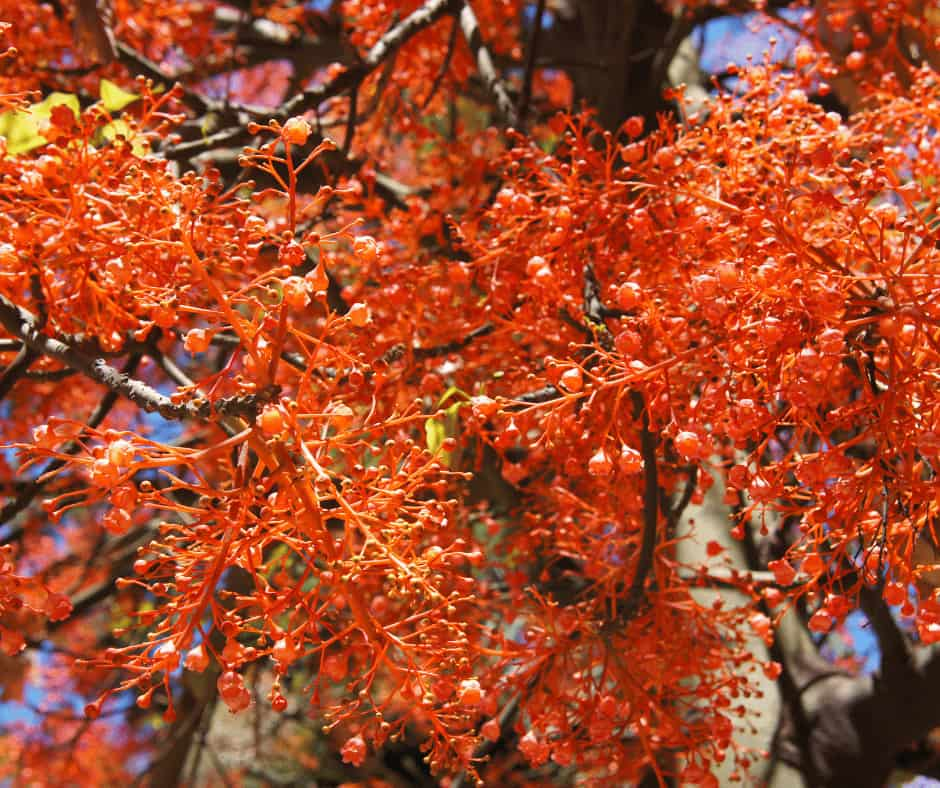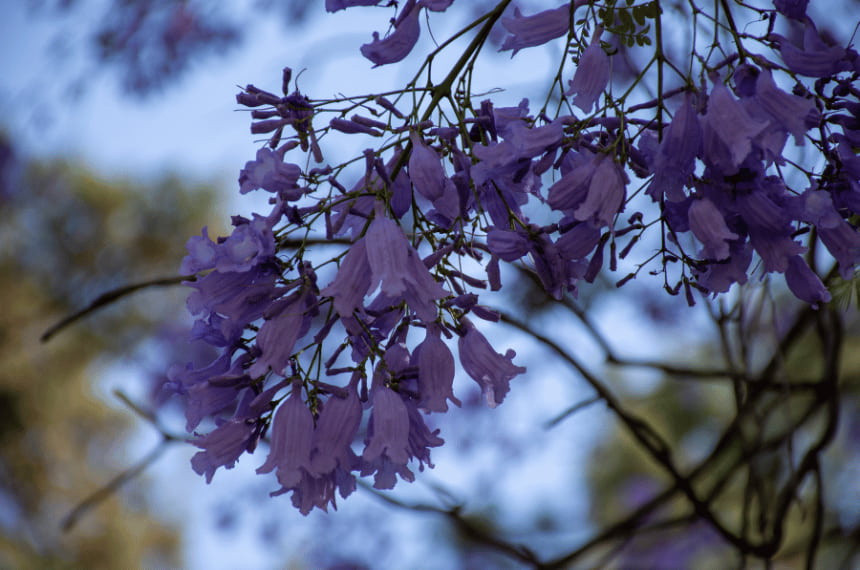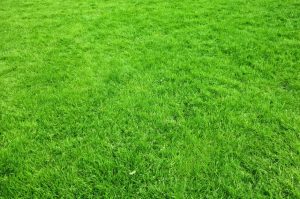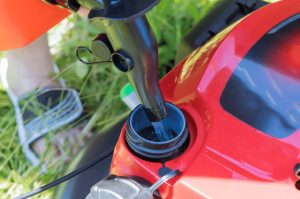In the vast tapestry of Australia’s greenery, where evergreens dominate the landscape, a unique group of trees carves out its niche, painting the terrain with seasonal transformations.
Deciduous trees, though rare in this land, offer a striking contrast to the year-round verdure, marking the passage of time with their vibrant autumnal hues and the gentle fall of their leaves.
This guide invites you to discover these exceptional species, showcasing the special allure they bring to the Australian flora, a testament to nature’s diversity and adaptability.
What is a deciduous tree?
A deciduous tree undergoes a seasonal transformation, shedding its leaves annually in response to cooler temperatures and shorter autumn days. This process, a stark contrast to evergreens that retain their foliage year-round, prepares the tree for a period of dormancy in winter.
In spring, these trees burst into life again, sprouting new leaves and often blossoming, marking a cycle of renewal and growth that adds dynamic beauty to the landscape.
Rarity of native deciduous trees in Australia
Australia’s landscape, a marvel of ecological diversity, has been shaped by its distinctive climate and ancient soils. This environment, characterised by variability and extremes, has given rise to a flora predominantly composed of evergreen species, with native deciduous trees emerging as a rarity.
The scarcity of these seasonal transformers can be attributed to several key factors rooted in the continent’s ecological and climatic challenges; let’s dive into some of these:
- Australia’s climate, marked by irregular rainfall and prolonged droughts, has fostered the evolution of plant species adept at conserving water. With their waxy leaves and deep root systems, Evergreens are naturally equipped to survive these harsh conditions, remaining green and photosynthetically active year-round.
- The nutrient-poor nature of Australian soils has played a crucial role. Deciduous trees shed their leaves annually and require significant energy and resources to regrow their foliage. In contrast, by retaining their leaves, evergreens minimise nutrient loss, making them better suited to Australia’s nutrient-scarce environments.
- The evolutionary history of Australia’s flora, isolated since the breakup of the supercontinent Gondwana, has led to unique adaptations. The predominance of evergreen species is a testament to their success adapting to Australia’s fluctuating climate and fire-prone landscapes. In such settings, the ability to quickly resume photosynthesis after disturbances gives evergreens a competitive advantage.
In this backdrop of ecological and climatic difficulties, native deciduous trees are exceptions rather than the rule. Their presence, while limited, adds a fascinating layer to Australia’s botanical narrative, highlighting the intricate dance between life and the environment in shaping the continent’s green heritage.
Spotlight on native Australian deciduous trees
Venturing into the realm of Australia’s native deciduous trees, we uncover species that not only defy the evergreen norm but also enrich the landscape with their unique life cycles and stunning visual displays.
Among these, the Flame Kurrajong, Flooded Gum, and Illawarra Flame Tree stand out, each contributing distinctively to the biodiversity and beauty of their habitats.
Flame Kurrajong (Brachychiton acerifolius)

Flame Kurrajong (Brachychiton acerifolius), with its fiery red blooms, lights up the landscape in a spectacular display of colour. This tree is not just a feast for the eyes; its flowering pattern, peaking from late spring to early summer, provides vital nectar for various pollinators. As the seasons turn, its foliage transforms, offering a visual marker of the changing climate, before shedding its leaves to conserve water in drier months.
Flooded Gum (Eucalyptus grandis)

Flooded Gum (Eucalyptus grandis), towering and majestic, plays a pivotal role in its ecosystem. This tree’s ability to shed its bark rather than its leaves is a unique adaptation, allowing it to thrive in Australia’s varied climates. Its white flowers bloom in summer, attracting bees and birds, while its tall stature provides shelter and nesting sites for countless species.
The Flooded Gum’s ecological role extends beneath the soil, where its roots help manage water flow and soil stability.
Illawarra Flame Tree (Brachychiton acerifolius)

Illawarra Flame Tree (Brachychiton acerifolius), perhaps one of the most visually striking of Australia’s native deciduous trees, offers a dramatic transformation with its bright red flowers that emerge as its leaves fall. This juxtaposition of leaflessness and vibrant blooms creates a stunning visual contrast in the landscape.
Beyond its beauty, the Illawarra Flame Tree is an important food source for birds and insects, contributing to pollinating and propagating the surrounding flora.
These trees, with their distinct flowering patterns, leaf changes, and ecological roles, add visual appeal to the Australian landscape and play crucial roles in their ecosystems.
From providing habitat and food for wildlife to contributing to the environment’s health, the Flame Kurrajong, Flooded Gum, and Illawarra Flame Tree exemplify the diversity and ecological significance of native Australian deciduous trees.
Other popular non-native deciduous trees in Australian gardens
Australian gardens, celebrated for their diversity and vibrancy, are home to various non-native deciduous trees that have adapted beautifully to the local climate, each bringing its unique charm and character.
The Jacaranda, Crepe Myrtle, and Japanese Maple stand out for their stunning ornamental values and growth habits.
Jacaranda (Jacaranda mimosifolia)

With its breathtaking purple blooms, Jacaranda (Jacaranda mimosifolia) has become synonymous with the Australian spring landscape.
Originating from South America, this tree has found a second home in the warmer regions of Australia, where its vivid blue-purple flowers create a spectacular display against the spring sky.
Jacarandas can grow significantly, making them a striking feature in larger gardens, running along fences or lining streets and parks. Their adaptability to various soil types and conditions, coupled with the dramatic floral canopy they provide, has cemented their popularity in Australian gardens.
Crepe Myrtle (Lagerstroemia indica)

Crepe Myrtle (Lagerstroemia indica), hailing from Asia, thrives in the Australian heat, offering a long-lasting show of pink to deep red flowers.
What makes Crepe Myrtles particularly appealing is their ability to flourish in humid and dry climates, making them a versatile choice for various Australian regions. Their moderate size and attractive bark, which peels away to reveal a smooth, mottled surface, allow them to fit into smaller gardens, near sewer pipes, or as part of more extensive landscape designs.
Although they require frequent pruning, the Crepe Myrtle’s resilience and the extended blooming period make them a cherished addition to any garden.
Japanese Maple (Acer palmatum)

Japanese Maple (Acer palmatum), a native of Japan, Korea, and China, is prized for its delicate foliage and stunning autumn colour.
In Australia, these trees have found favour in cooler, temperate regions, where their leaves transform into brilliant shades of red, orange, and yellow in autumn. Japanese Maples are relatively small, making them perfect for suburban gardens or even as container plants. Their adaptability to shade and preference for protected positions mean they can be easily incorporated into various garden settings, adding a touch of elegance and serene beauty.
These non-native deciduous trees, each with distinct growth habits and ornamental values, have become integral to the Australian garden landscape. Their ability to adapt to the local climate while offering year-round visual interest makes them beloved by gardeners and a testament to the rich tapestry of plant life that thrives in Australia.
Choosing deciduous trees for Australian gardens
Selecting the right deciduous trees for Australian gardens is an art that balances aesthetic desires with practical considerations. Here are some tips to guide you through choosing trees that will thrive and bring beauty to your garden for years.
Consider garden size and tree mature size
- Space awareness: Before choosing a tree, consider the space available in your garden. Large species like the Jacaranda need room to spread. At the same time, smaller trees like the Japanese Maple are perfect for compact spaces or containers.
- Future growth: Consider the tree’s mature size, height, and canopy spread. Ensure enough room for the tree to grow without interfering with buildings, power lines, or other plants.
Climate zone compatibility
- Climate match: Select trees that are well-suited to your local climate zone. While Jacarandas thrive in warmer climates, Japanese Maples prefer cooler, temperate areas. Research the tree’s climate preferences to ensure it will thrive in your garden.
- Water requirements: Consider the tree’s needs, especially in drought-prone areas. Some deciduous trees are more drought-tolerant than others, making them more suitable for certain Australian climates.
Desired aesthetic and seasonal changes
- Colour palette: Decide on the colour scheme you prefer for your garden. Deciduous trees offer a range of colours throughout the year, from the vibrant purples of Jacarandas to the fiery reds of Japanese Maples in autumn.
- Seasonal interest: Think about what you want your garden to look like each season. Deciduous trees can provide shade in summer, stunning foliage in autumn, interesting branch patterns in winter, and fresh greenery in spring.
Maintenance needs
- Upkeep considerations: Some deciduous trees require more maintenance, including pruning, watering, and cleanup of fallen leaves. Consider how much time and effort you’re willing to invest in tree care.
- Pest and disease resistance: Look for trees resistant to pests and diseases common in your area. This will reduce the need for chemical treatments and ensure a healthier garden.
By considering these factors, you can choose deciduous trees that fit your garden’s conditions and aesthetic preferences and contribute positively to the local ecosystem. Remember, the right tree in the right place can add immeasurable beauty and value to your garden and the environment.
Caring for deciduous trees in Australia
Caring for deciduous trees in Australian gardens involves understanding their needs from planting to maturity.
Here’s a comprehensive guide to ensure these trees thrive in your garden, whether native or popular non-native species.
Planting
- Right time: The best time to plant deciduous trees is during the dormant season, from late autumn to early spring. This timing allows the tree to establish roots in its new location before the stress of the growing season.
- Soil preparation: Most deciduous trees prefer well-drained soil rich in organic matter. Amend the planting site with compost to improve soil structure and fertility.
- Planting depth: Ensure the tree is planted at the same depth it was grown at the nursery. Planting too deep can lead to root rot and other issues.
Watering
- Establishment phase: Newly planted trees require regular watering to establish. Water deeply once a week, allowing the soil to dry out slightly between waterings.
- Mature trees: Once established, most deciduous trees are relatively drought-tolerant. However, additional watering may be necessary during prolonged dry spells, especially for non-native species less adapted to Australian conditions.
Pruning
- Timing: Prune deciduous trees in late winter or early spring before new growth starts. This timing allows for better wound healing and reduces pest and disease risk.
- Technique: Remove dead, damaged, or diseased branches to maintain tree health. Pruning can also shape the tree and improve air circulation within the canopy.
Soil preferences
- pH Levels: Check the soil pH and adjust if necessary to match the tree’s preference. While most deciduous trees are adaptable, some, like Japanese Maples, prefer slightly acidic soil.
- Mulching: Apply a layer of organic mulch around the tree’s base to conserve moisture, regulate soil temperature, and reduce weed competition. Keep the mulch away from the tree trunk to prevent rot.
Protection from pests and diseases
- Regular inspections: Check your trees regularly for signs of pests or diseases. Early detection is key to effective management.
- Natural predators: Encourage beneficial insects that prey on common pests. This natural control method reduces the need for chemical interventions.
- Hygiene: Keep the area around the tree clean and debris-free to minimise disease risk. Remove fallen leaves, especially if they show signs of disease.
Special considerations for non-native species
- Adaptability: Non-native species may require more attention to watering and protection from extreme temperatures. Consider using shade cloth or windbreaks to protect sensitive species.
- Fertilisation: While native trees often thrive without additional fertilisers, non-native species may benefit from a balanced, slow-release fertiliser in early spring.
By following these care guidelines, you can ensure the healthy growth and longevity of deciduous trees in your Australian garden, contributing to the beauty and biodiversity of your outdoor space.
Conclusion
Deciduous trees, with their seasonal transformations, enrich Australia’s landscapes, offering a unique beauty and ecological diversity.
As we’ve explored, these trees contrast with our evergreen backdrop and contribute significantly to our environment. Embracing these living markers of time in our gardens enhances visual appeal and supports biodiversity.
Let’s celebrate and cultivate the remarkable legacy of deciduous trees, adding their splendour to our green spaces!





